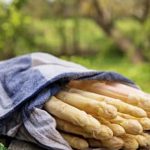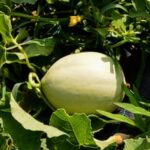Are you looking to maintain a thriving vegetable garden year-round in Zone 7? Understanding the unique climate and growing conditions of this zone is crucial for successful year-round vegetable gardening. From choosing the right vegetables to managing pests and diseases, this article will provide you with essential tips and strategies for maximizing your yields in Zone 7.
Zone 7 encompasses regions with a moderate climate, experiencing both hot summers and cold winters. With an average minimum winter temperature of 0°F to 10°F (-18°C to – 12°C), Zone 7 offers a relatively long growing season compared to colder zones. This makes it possible to grow a wide variety of vegetables throughout the year, with proper planning and preparation.
In order to create a successful year-round vegetable garden in Zone 7, it’s important to carefully select the right vegetables that can withstand the specific climatic conditions of this zone. Additionally, proper planning and preparation of the garden for each season, as well as utilizing techniques such as cold frames and row covers, are essential for extending the growing season.
Choosing the Right Vegetables for Year-Round Gardening
Understanding Seasonal Vegetables
When selecting vegetables for year-round gardening, it’s important to understand which ones are best suited for each season. In Zone 7, cool-season vegetables such as kale, lettuce, broccoli, and carrots are ideal for fall and early spring planting. On the other hand, warm-season vegetables like tomatoes, peppers, squash, and cucumbers thrive in the summer months. By understanding the seasonal preferences of different veggies, you can plan your garden accordingly.
Varieties With Extended Harvests
Certain vegetable varieties have longer harvest periods, making them suitable for year-round gardening in Zone 7. For example, Swiss chard and kale are known to produce leaves over an extended period of time when regularly harvested. Additionally, some tomato varieties continue to fruit well into the fall if given proper care. By choosing these extended harvest varieties, you can ensure a continuous supply of fresh produce throughout the year.
Taking Advantage of Microclimates
Zone 7 landscapes often have microclimates within them that can affect growing conditions. For instance, certain areas of your garden may receive more sunlight or be shielded from harsh winds. It’s important to take advantage of these microclimates when choosing vegetables for year-round gardening. Heat-loving plants can be placed in sun-drenched spots with good drainage while cool-weather crops can be located in shadier areas or near structures that provide protection from cold winds.
By considering these factors when selecting vegetables for your year-round garden in Zone 7, you can maximize your chances of success and enjoy a bountiful harvest throughout the seasons.
Planning and Preparing the Garden for Each Season
In Zone 7, where the climate can be characterized by mild winters and hot summers, planning and preparing the garden for each season is crucial for successful year-round vegetable gardening. With proper planning and preparation, gardeners in Zone 7 can enjoy a bountiful harvest throughout the year.
Understanding Seasonal Needs
One of the first steps in planning a year-round vegetable garden in Zone 7 is understanding the unique needs of each season. Spring brings its own set of challenges, such as sudden temperature changes and heavy rainfall, while summer requires measures to combat heat stress and drought. In fall, it’s important to prepare for potential frost events, while winter calls for protection from freezing temperatures.
Soil Preparation and Amendment
To ensure a successful year-round vegetable garden, it’s essential to prepare the soil for each season. This may involve testing the soil pH, adding organic matter such as compost or aged manure, and providing adequate drainage. As different crops have varying nutrient requirements, amending the soil accordingly is key to promoting healthy growth and optimum yields.
Planting Schedule and Crop Selection
Creating a planting schedule that aligns with the specific needs of each season is vital for year-round vegetable gardening in Zone 7. Some vegetables thrive in cooler weather, while others prefer warmer temperatures. By selecting a diverse range of crops that can withstand the seasonal conditions in Zone 7, gardeners can ensure a continuous harvest throughout the year.
Extending the Growing Season With Cold Frames and Row Covers
One of the biggest challenges for year round vegetable gardening in zone 7 is the fluctuating temperatures that come with each season. However, there are ways to extend the growing season and protect your crops from extreme temperatures using cold frames and row covers.
Cold frames are like mini greenhouses that can be placed directly over your garden beds. They capture and retain heat from the sun, creating a warmer microclimate for your plants. This allows you to start your seeds earlier in the spring or grow cold-tolerant vegetables well into the winter months. Some popular vegetables to grow in cold frames year round include lettuce, spinach, carrots, and kale.
Row covers are lightweight, breathable fabrics placed over crops to provide protection from pests, harsh sunlight, and frost. Unlike cold frames, row covers can be easily removed or adjusted as needed. Using row covers is a great way to protect tender seedlings during the early spring months when frosts are still possible. It also creates a barrier against common pests such as cabbage worms and aphids.
To make the most out of using cold frames and row covers in zone 7 vegetable gardening, here are some tips:
- Monitor temperature changes inside your cold frames to prevent overheating on warmer days
- Secure row covers firmly around the edges of your garden beds to keep pests out
- Keep an eye on weather forecasts and adjust your covering accordingly to account for any sudden fluctuations
By utilizing these tools effectively, you can extend your growing season by several weeks or even months in zone 7, giving you more time to enjoy fresh homegrown produce throughout the year.
Managing Pests and Diseases in Zone 7 Vegetable Gardens
Year-round vegetable gardening in zone 7 can be a rewarding experience, but it also comes with its challenges, particularly when it comes to managing pests and diseases. With the varying temperatures and weather conditions throughout the year, it’s important for gardeners to be proactive in preventing and addressing these issues to ensure a successful harvest.
One of the first steps in managing pests and diseases is to choose disease-resistant and pest-tolerant vegetable varieties. This can help reduce the risk of infestations and infections, especially during the more vulnerable growing seasons. Additionally, practicing good garden hygiene by removing dead or diseased plant material, maintaining weed-free beds, and rotating crops can help minimize the spread of pests and diseases.
Another key aspect of pest and disease management is regular monitoring of the garden. By keeping an eye on plants for any signs of damage or infection, gardeners can identify issues early on and take action before they escalate. This may involve hand-picking pests off plants, using organic pest control methods such as neem oil or insecticidal soap, or applying natural fungicides to prevent diseases.
It’s also essential to promote healthy plant growth through proper watering, fertilizing, and providing adequate spacing between plants. Healthy plants are better equipped to resist pests and diseases compared to stressed or weakened ones. Lastly, being knowledgeable about common pests and diseases in zone 7 can help gardeners take preemptive measures to protect their vegetables throughout the year.
| Managing Pests | Diseases |
|---|---|
| Choose disease-resistant varieties | Monitor for any signs of infection |
| Maintain good garden hygiene | Use organic pest control methods |
| Promote healthy plant growth | Be knowledgeable about common zone 7 pests and diseases |
Harvesting and Storing Vegetables for Year-Round Use
When planning a year-round vegetable gardening in zone 7, it is important to factor in the harvesting and storing of your produce. Depending on the specific vegetables you are growing, harvest times will vary throughout the year. It is essential to check the optimal time for harvesting each type of vegetable to ensure that they are at their peak flavor and nutritional value.
Once harvested, proper storage is crucial to maintain the freshness and quality of your vegetables. Some root vegetables like carrots and beets can be stored in a cool, dark place such as a root cellar or basement for several months. Leafy greens such as lettuce and spinach are best stored in the refrigerator, while some fruits like tomatoes are best ripened at room temperature before being refrigerated.
It’s also a great idea to consider preserving some of your harvest through methods such as freezing, canning, or pickling. This can help you enjoy home-grown produce even during the colder months when fresh options may be limited. By properly harvesting and storing your vegetables, you can continue to enjoy the fruits of your labor long after the growing season has ended.
| Vegetable | Optimal Harvest Time |
|---|---|
| Carrots | Late fall to early winter |
| Lettuce | Harvest as soon as leaves reach desired size |
| Tomatoes | Pick once fully ripe, before spoilage occurs |
Succession Planting and Crop Rotation for Continuous Harvests
Succession planting and crop rotation are essential strategies for ensuring a continuous harvest in year-round vegetable gardening in zone 7. By carefully planning and rotating the crops, you can maximize the use of your garden space and soil fertility, ultimately leading to bountiful yields throughout the year.
Succession planting involves sowing new plants at regular intervals to ensure a steady supply of fresh vegetables. This technique allows you to make the most of your growing season by filling gaps left by harvested crops with new ones. Some popular vegetables for succession planting in zone 7 include lettuce, spinach, radishes, carrots, and beans. By staggering plantings every few weeks, you can enjoy a continuous harvest rather than experiencing a glut of produce all at once.
Crop rotation is another important practice that helps prevent soil depletion and minimize pest and disease problems. It involves moving different vegetable families around the garden each year to avoid depleting the same nutrients from the soil and to disrupt the life cycles of pests and diseases.
For instance, if you grew tomatoes in one bed this year, consider planting brassicas or legumes in that same bed next year. By following a simple crop rotation plan, you can maintain healthy soil and reduce your reliance on chemical fertilizers and pesticides.
Here are some useful tips for succession planting and crop rotation in zone 7 vegetable gardens:
- Keep a detailed journal or map of your garden layout from year to year to track which crops were planted where.
- Group vegetables into different families (e.g. nightshades, brassicas, cucurbits) and rotate them within specific areas of your garden.
- Consider cover cropping during off-seasons to improve soil health and suppress weeds.
By incorporating these strategies into your gardening routine, you can ensure a continuous supply of fresh produce throughout the year while promoting healthy soil and plant growth.
Tips and Tricks for Maximizing Yields in Zone 7 Vegetable Gardens
In conclusion, year-round vegetable gardening in Zone 7 can be a rewarding and fruitful endeavor for those who are willing to put in the effort. By understanding the climate and growing conditions of Zone 7, gardeners can make informed choices about which vegetables to plant and how to best plan and prepare their gardens for each season.
Choosing the right vegetables for year-round gardening is crucial, as some plants are better suited to the cooler temperatures of fall and winter, while others thrive in the heat of summer. With proper planning and preparation, including the use of cold frames and row covers to extend the growing season, gardeners in Zone 7 can enjoy fresh produce throughout the year.
Additionally, managing pests and diseases, as well as practicing succession planting and crop rotation, are essential for maintaining healthy plants and ensuring continuous harvests. By following these tips and tricks for maximizing yields in Zone 7 vegetable gardens, gardeners can make the most of their space and resources while enjoying a bountiful supply of homegrown vegetables year-round.
Frequently Asked Questions
What Vegetables Grow Best in Zone 7?
In Zone 7, vegetables that grow best include broccoli, cabbage, carrots, lettuce, spinach, and kale. These cool-season crops thrive in the moderate temperatures and frost of Zone 7.
Are There Any Vegetables That Grow Year Round?
Yes, there are some vegetables that can grow year-round in certain climates. For example, in milder climates or with the help of greenhouses or cold frames, vegetables like spinach, kale, carrots, and leeks can be grown throughout the year.
What Kinds Types of Crops Grow and Harvest in Zone 7 8 in the Winter?
In Zone 7 and 8 in the winter months, cold-hardy crops like Brussels sprouts, onions, garlic, and winter squash can be grown and harvested. These crops are able to withstand the lower temperatures and shorter daylight hours of this region during the winter season.

If you’re looking to get into vegetable gardening, or are just looking for some tips on how to make your current garden better, then you’ve come to the right place! My name is Ethel and I have been gardening for years. In this blog, I’m going to share with you some of my best tips on how to create a successful vegetable garden.





